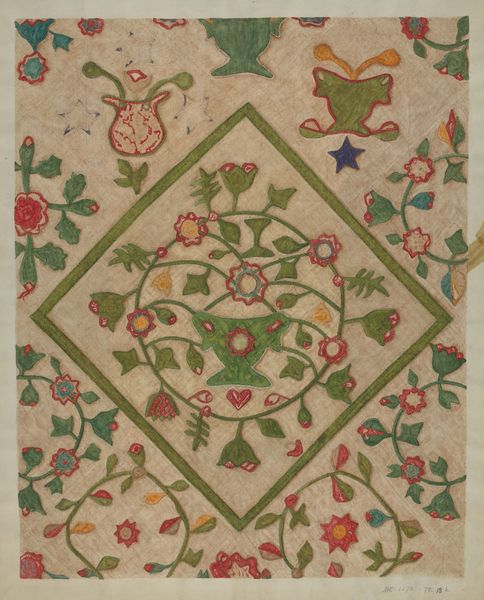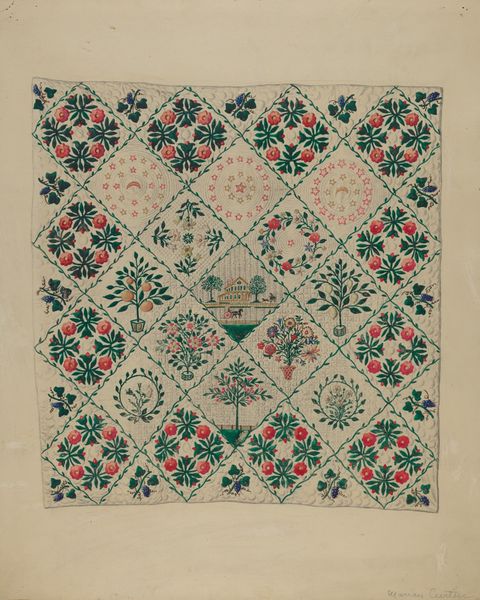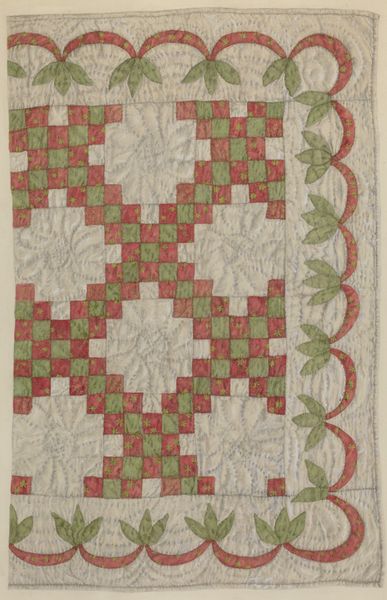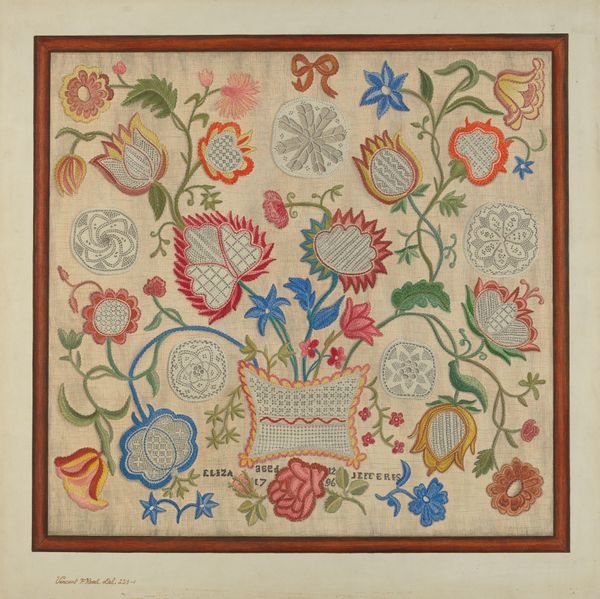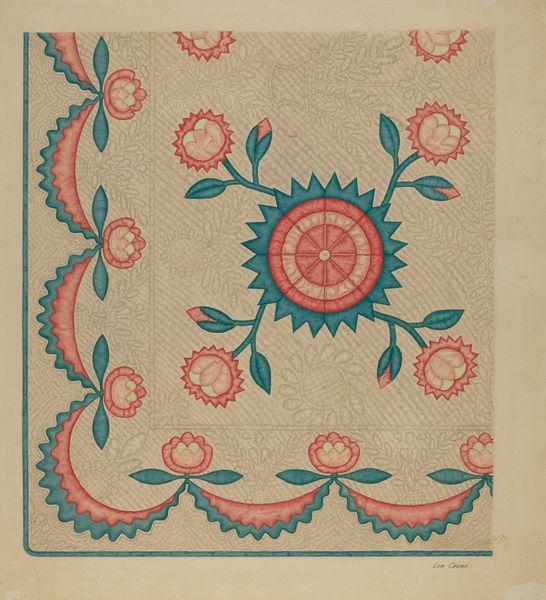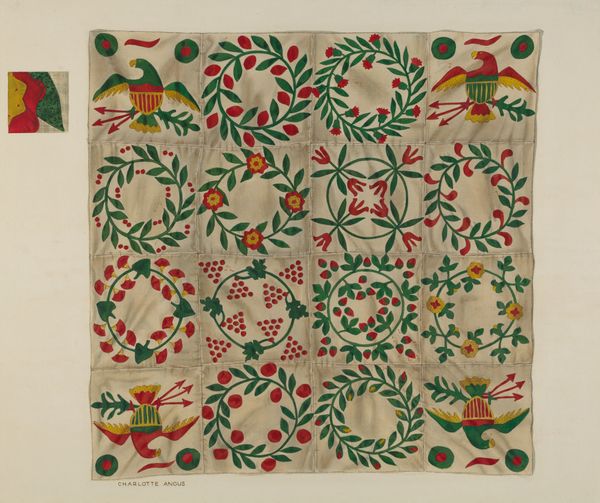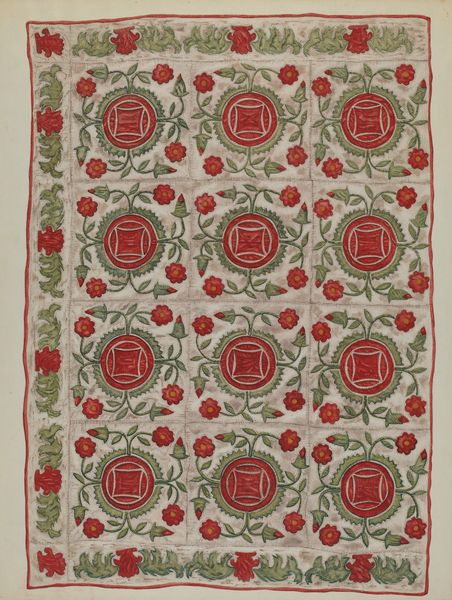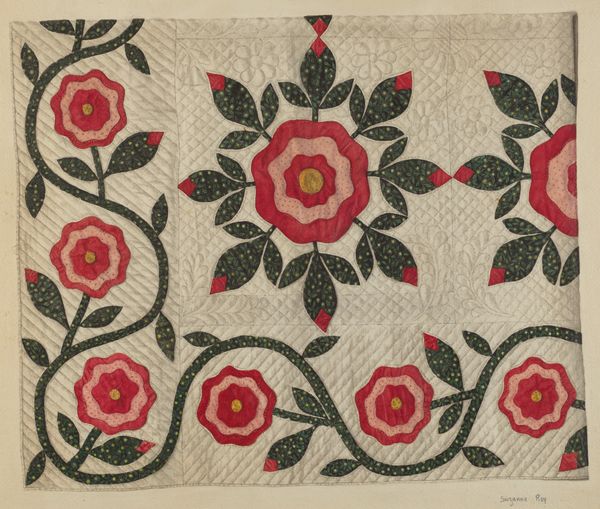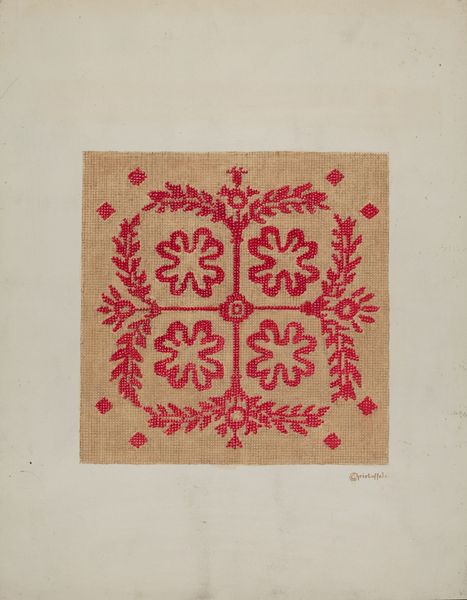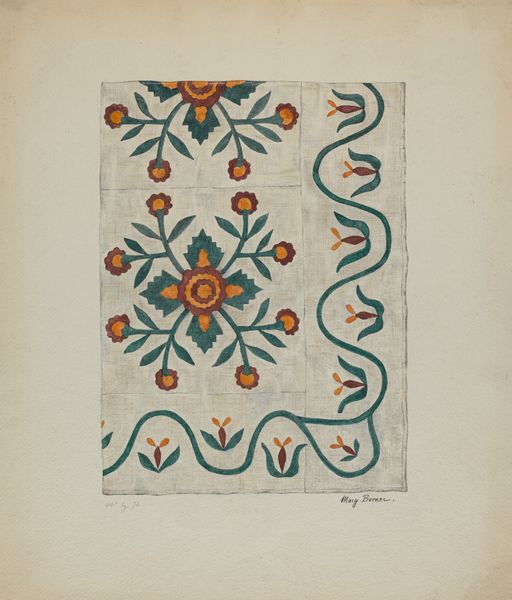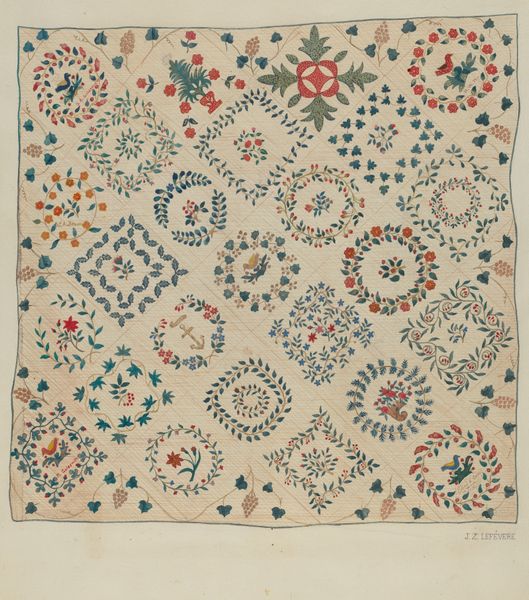
painting, textile
#
folk-art
#
water colours
#
painting
#
textile
#
folk-art
#
decorative-art
#
watercolor
Dimensions: overall: 50.9 x 56.5 cm (20 1/16 x 22 1/4 in.) Original IAD Object: 79 1/2" x 78"
Copyright: National Gallery of Art: CC0 1.0
Curator: Looking at "Quilt (Flowers in Circle)", dated circa 1937, I immediately perceive a sense of cozy domesticity—the repetitive floral motifs create a welcoming, almost nostalgic feeling. Editor: It is interesting how this arrangement, regardless of any possible sentimental values, works so harmoniously at a purely visual level. Notice the strong central circle with the quatrafoil inside, set against the angular grid. The color story here is deceptively simple – a restrained palette dominated by whites and grays accented with the reds that are all distributed evenly. It gives the impression of carefully orchestrated restraint. Curator: That restraint also resonates on a deeper cultural level. Quilts in general were born out of necessity—a means of providing warmth—but quickly evolved into avenues for expressing communal identity, telling stories through symbols passed down through generations. The red flower, commonly understood to symbolize passion and love, and those darker leaves and stems are indicative of perseverance. Editor: The symbolism blends seamlessly with a powerful composition, however. That bold circle functions almost as a mandala. It stabilizes the visual field while the floral arrangements counterbalance the strict geometric structure. What seems like folk art on the surface actually has deep resonance with traditions of transcendental, highly abstract pictorial language. Curator: And I find the deliberate imperfections so fascinating! Each flower, while similar, is unique. Those tiny irregularities reflect the human hand, imbuing the quilt with authenticity. Even if created by machine it evokes an entire realm of homebound and community symbolism, perhaps also a sense of family, and, in some sense, nation, built one stitch at a time, or in this case, carefully chosen water colour on textile or paper. Editor: These apparent imperfections underscore how form is never truly divorced from function; how something originally conceived as mere 'craft' or folk art ends up revealing its deeper underlying order, if not perfection, which, upon closer inspection, challenges our own understanding of hierarchies and traditions. Curator: Thinking about how it embodies both folk tradition and pure geometry, I find myself reconsidering the traditional boundaries of fine art. Editor: Exactly. This meticulous approach to form provides a new level to thinking about what artmaking signifies as human cultural undertaking and what we consider worthy of sustained attention.
Comments
No comments
Be the first to comment and join the conversation on the ultimate creative platform.
